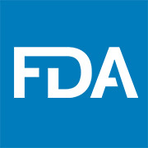The FDA's New Asbestos Testing Rules: A Step Towards Safer Cosmetics
December 28, 2024, 3:54 pm

Location: United States, New Jersey, New Brunswick
Employees: 10001+
Founded date: 1886
The landscape of cosmetics is shifting. The U.S. Food and Drug Administration (FDA) has proposed new rules aimed at ensuring that talc-containing products are free from asbestos. This move comes in response to growing consumer concerns and a history of legal battles surrounding the safety of talc, particularly in products like baby powder.
Talc is a mineral, often used in cosmetics for its moisture-absorbing properties. It gives products a silky feel and enhances texture. However, talc is mined from the earth, sometimes in close proximity to asbestos, a known carcinogen. This proximity raises alarms about cross-contamination. For years, the beauty industry has faced scrutiny over the safety of talc, especially after numerous lawsuits against major companies like Johnson & Johnson (J&J).
The FDA's proposal mandates that cosmetic companies implement standardized testing methods to detect asbestos in talc products. This is not just a precaution; it’s a necessary step to protect consumers. Asbestos exposure has no safe threshold. Even a small amount can be harmful, leading to serious health issues, including lung and ovarian cancers.
The backdrop of this proposal is a complex legal saga. J&J has been embroiled in litigation, with over 62,000 claimants alleging that its talc products caused cancer. The company has proposed a staggering $10 billion settlement to resolve these claims, yet it continues to assert the safety of its products. This dichotomy creates a cloud of uncertainty for consumers.
The FDA's proposed rules are a response to this uncertainty. They aim to provide clarity and reassurance. Under the new regulations, manufacturers would be required to test each batch of talc-containing products for asbestos using advanced techniques like polarized light microscopy and transmission electron microscopy. These methods are designed to detect even the smallest traces of asbestos, ensuring that products reaching consumers are safe.
The FDA's move is significant. It reflects a growing recognition of the need for stricter safety standards in the cosmetics industry. For too long, consumers have been left in the dark about the potential risks associated with talc. The proposed testing requirements could lead to a new era of transparency and accountability.
Since 2021, the FDA has conducted extensive testing on cosmetic samples, with over 150 tested and none showing asbestos contamination. However, the agency acknowledges that the risk remains, particularly given the historical context of talc mining. The new rules are not just about addressing past issues; they are about preventing future ones.
The legal landscape surrounding talc is fraught with challenges. Determining the root cause of cancer is complex, especially with conditions like ovarian cancer, which is relatively rare. Large studies may not yield definitive answers, leaving many questions unanswered. The American Cancer Society has stated that if there is an increased risk of cancer from talc, it is likely to be very small. Yet, for consumers, even a small risk can feel monumental.
The proposed rules are open for public comment for 90 days. This period allows consumers, industry representatives, and health advocates to voice their opinions. It’s a chance for the public to engage in the regulatory process, ensuring that their concerns are heard.
The FDA's initiative is a beacon of hope in a murky sea of uncertainty. It signals a commitment to consumer safety and a willingness to adapt to new scientific evidence. As the beauty industry evolves, so too must its regulations. The proposed testing rules are a step in the right direction, but they are just the beginning.
In a world where consumers are increasingly aware of what goes into their products, transparency is key. The beauty industry must rise to the occasion. Companies need to prioritize safety over profit. The proposed FDA rules could serve as a catalyst for change, encouraging manufacturers to adopt safer practices and foster consumer trust.
As the dust settles on this proposal, one thing is clear: the conversation around talc and asbestos is far from over. The FDA's actions may pave the way for more rigorous testing and stricter regulations in the cosmetics industry. Consumers deserve to know what they are putting on their skin. They deserve products that are not only effective but also safe.
In conclusion, the FDA's proposed asbestos testing rules for talc-containing cosmetics represent a crucial step towards safeguarding public health. As the agency seeks to finalize these regulations, the hope is that they will usher in a new era of safety and transparency in the beauty industry. The road ahead may be long, but the destination is worth the journey. Consumers can only hope that their voices will be heard and that their safety will be prioritized. The stakes are high, and the time for action is now.
Talc is a mineral, often used in cosmetics for its moisture-absorbing properties. It gives products a silky feel and enhances texture. However, talc is mined from the earth, sometimes in close proximity to asbestos, a known carcinogen. This proximity raises alarms about cross-contamination. For years, the beauty industry has faced scrutiny over the safety of talc, especially after numerous lawsuits against major companies like Johnson & Johnson (J&J).
The FDA's proposal mandates that cosmetic companies implement standardized testing methods to detect asbestos in talc products. This is not just a precaution; it’s a necessary step to protect consumers. Asbestos exposure has no safe threshold. Even a small amount can be harmful, leading to serious health issues, including lung and ovarian cancers.
The backdrop of this proposal is a complex legal saga. J&J has been embroiled in litigation, with over 62,000 claimants alleging that its talc products caused cancer. The company has proposed a staggering $10 billion settlement to resolve these claims, yet it continues to assert the safety of its products. This dichotomy creates a cloud of uncertainty for consumers.
The FDA's proposed rules are a response to this uncertainty. They aim to provide clarity and reassurance. Under the new regulations, manufacturers would be required to test each batch of talc-containing products for asbestos using advanced techniques like polarized light microscopy and transmission electron microscopy. These methods are designed to detect even the smallest traces of asbestos, ensuring that products reaching consumers are safe.
The FDA's move is significant. It reflects a growing recognition of the need for stricter safety standards in the cosmetics industry. For too long, consumers have been left in the dark about the potential risks associated with talc. The proposed testing requirements could lead to a new era of transparency and accountability.
Since 2021, the FDA has conducted extensive testing on cosmetic samples, with over 150 tested and none showing asbestos contamination. However, the agency acknowledges that the risk remains, particularly given the historical context of talc mining. The new rules are not just about addressing past issues; they are about preventing future ones.
The legal landscape surrounding talc is fraught with challenges. Determining the root cause of cancer is complex, especially with conditions like ovarian cancer, which is relatively rare. Large studies may not yield definitive answers, leaving many questions unanswered. The American Cancer Society has stated that if there is an increased risk of cancer from talc, it is likely to be very small. Yet, for consumers, even a small risk can feel monumental.
The proposed rules are open for public comment for 90 days. This period allows consumers, industry representatives, and health advocates to voice their opinions. It’s a chance for the public to engage in the regulatory process, ensuring that their concerns are heard.
The FDA's initiative is a beacon of hope in a murky sea of uncertainty. It signals a commitment to consumer safety and a willingness to adapt to new scientific evidence. As the beauty industry evolves, so too must its regulations. The proposed testing rules are a step in the right direction, but they are just the beginning.
In a world where consumers are increasingly aware of what goes into their products, transparency is key. The beauty industry must rise to the occasion. Companies need to prioritize safety over profit. The proposed FDA rules could serve as a catalyst for change, encouraging manufacturers to adopt safer practices and foster consumer trust.
As the dust settles on this proposal, one thing is clear: the conversation around talc and asbestos is far from over. The FDA's actions may pave the way for more rigorous testing and stricter regulations in the cosmetics industry. Consumers deserve to know what they are putting on their skin. They deserve products that are not only effective but also safe.
In conclusion, the FDA's proposed asbestos testing rules for talc-containing cosmetics represent a crucial step towards safeguarding public health. As the agency seeks to finalize these regulations, the hope is that they will usher in a new era of safety and transparency in the beauty industry. The road ahead may be long, but the destination is worth the journey. Consumers can only hope that their voices will be heard and that their safety will be prioritized. The stakes are high, and the time for action is now.
